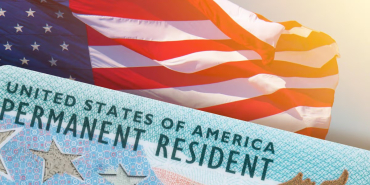The Biggest Myth About Immigration to the US

Project Homecoming, the Trump administration's immigration policy, has come into effect, renewing debates around America's complex labour market dynamics and the feasibility of legal immigration pathways.
The policy, framed as an opportunity for undocumented immigrants to leave the US with a possible future re-entry, spotlights the limited options for many seeking legal residency. Announced earlier this year, the scheme offers undocumented immigrants a conditional incentive. Department of Homeland Security Secretary Kristi Noem said, "If you are here illegally, we will find you and deport you, but if you leave now, you may have an opportunity to return and enjoy our freedom."
This ultimatum, presented as an act of national generosity, lacks firm legal guarantees, contrasting with the government's tough stance on deportation.
The initiative feeds into a widespread sentiment that distinguishes between immigrants who supposedly "wait their turn" and those who bypass legal procedures. While respecting the rule of law, this view falls apart upon scrutiny, considering that, for many undocumented immigrants, a viable legal pathway is non-existent.
The Immigration and Nationality Act of 1965 shaped much of the existing framework, establishing family reunification, employment-based preferences, and humanitarian relief as the main routes to permanent residency. Family reunification, which prioritises close relatives of US citizens and permanent residents, dominates. Employment-based routes focus on those with college degrees or exceptional skills, usually sponsored by employers. Humanitarian routes serve refugees and asylum seekers, who often face long and uncertain legal processes.
For low-skilled workers without family ties or claims to asylum, legal routes to residency remain severely limited. Temporary work visas, although available in theory, are insufficient to meet demand. The primary legal avenue for low-skilled labour is the H-2 visa, which includes H-2A for agricultural work and H-2B for non-agricultural roles. In 2023, the US issued approximately 443,000 such visas. This is dwarfed by the actual need.
With an estimated 13.7 million undocumented immigrants in the country, about 75 percent of whom are working-age adults, the system faces critical strain. After accounting for the 1.7 million undocumented immigrants with college degrees, roughly 8.6 million people lack advanced education and a realistic path to legal employment. Adding this figure to the 443,000 temporary work visa holders, the demand for legal access to labour markets totals approximately 9 million. Under current regulations, only about 1 in 18 is legally accommodated.
Despite this, the narrative that undocumented immigrants intentionally disregard the law persists. The numbers reflect necessity rather than lawlessness. The demand for low-wage workers in sectors such as agriculture, hospitality, construction, and home care is a powerful pull factor. These jobs, often poorly paid and physically demanding, rely on a workforce with precarious legal status.
Critics of immigration often suggest that removing undocumented workers would open up opportunities for unemployed citizens.
However, this argument rarely holds up under economic analysis. The Bureau of Labour Statistics reports around 6.7 million unemployed people in the US, with 5.2 million lacking a college degree. Even with a perfect match between job vacancies and worker availability, labour demand significantly exceeds supply. The willingness to take on physically taxing, low-paying jobs further complicates the picture. Domestic workers are often deterred by these conditions, and the geographical location of labour demand rarely matches where unemployed Americans live.
Undocumented workers are often filling roles that would otherwise remain unfilled.
This situation highlights a fundamental contradiction in immigration discourse. While politicians condemn undocumented workers, the economy relies on their labour. They perform essential tasks in hotels, fields, meat processing plants, and in-home care, supporting the lifestyles that many Americans take for granted. Even the Trump Organisation has benefited from the H-2 visa programme.
Economic research has consistently demonstrated the benefits of low-skilled immigration. These workers contribute to labour productivity, help to control the prices of essential goods and services, and stimulate local economies. Rather than being a burden, they often support the "American way of life" that restrictive immigration policies claim to defend.
The "line-cutter" myth, perpetuated by conservative commentators, advocacy groups, and media outlets, casts undocumented immigrants as gaining an unfair advantage over those who follow the rules. However, the metaphor is flawed. The US immigration system is not a single queue but a fragmented structure with various criteria, categories, and quotas that make entry virtually impossible for millions.
The image of an applicant patiently completing paperwork and legally boarding a plane is outdated and misleading. Undocumented immigrants do not affect the timeline or availability of legal admissions for others. They operate in a separate sphere, unacknowledged by official policy but critical to economic stability.
Efforts to counter the "cutting in line" narrative are often limited to academic reports and policy briefs from liberal and libertarian think tanks, rarely penetrating mainstream discussions.








Add new comment